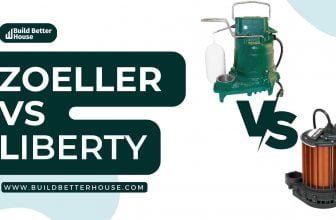How To Heat A Basement: 5 Simple And Effective Ways

Many folks need clarification on how to heat a basement with the numerous heating options available. Nobody wants to pay more on their electric bill than necessary because they choose an inefficient electric heater or a heating system with higher power than necessary.
Here, we’ll go through all the different types of heat sources and electric space heaters on the market to help you figure out the best and most cost-effective way to heat a finished basement.
How to heat a basement: Queries for best effective ways
The best basement heating system, when contemplating how to heat a basement, is one that effectively heats the basement without taking up a lot of room or charging outrageous energy costs.
Before choosing an ideal option to heat a basement, consider what works best for your space and budget.
Some choices will cost more upfront but will heat the space more effectively. Other solutions will cost you less money but will not heat the area as well. Consider the following as you consider all available heating methods:
- What size space do you need to heat?
- How much room do you have in your home for heating equipment?
- What is your installation budget?
- How much money do you spend on energy each month?
By asking these vital questions, you can quickly select a better solution that fits your budget and provides you with a warm basement and answer the question- How to heat a basement with perfection?
How to heat a basement: 5 effective ways
How to heat a basement is an essential but critical topic for any homeowner with a basement, especially during the winter season.
To assist you, we have listed 5 effective ways on how to heat a basement, and you can choose the one that best fits your budget. Let’s go over them one by one:
Continue HVAC and extend ductwork
Unless you live in a particularly cold climate, your home should already have an indoor heating system. So it makes sense to build on the existing heating system and extend it into the finished basement space.
The ductwork is often visible and accessible from the basement. Before extending the ducting, consult an HVAC expert. While it may appear simple, there are more critical factors to consider that only an HVAC specialist can assist you with, such as estimating the heating load and determining the size and arrangement of ductwork.
Note:
It is not usually necessary to install fully new ductwork. You may use existing ductwork to send air down to the basement. For example, ducts that run between floor joists can frequently be cut into from below.
Suppose you are installing a new furnace for your home and have no immediate plans to finish the basement. In that case, you may wish to select a more powerful unit than is required for the existing space, anticipating future basement refinishing. If you are contemplating this alternative, consult with an HVAC specialist first: Installing a far too large system can result in additional issues throughout the time it takes to refinish the room.
Even if you don’t have the luxury of doing so, your HVAC system may be able to handle an extra load of space to heat.
One disadvantage is that the modifications extend to the entire house when you upgrade your entire heating system. If your family has a movie night in your newly refinished basement and you turn up the forced air heat, it will focus on the basement stairs.
Baseboard heaters
On the list of how to heat a basement, the best basement heating alternative is a convection or hydronic electric baseboard heater hooked into the home’s electrical system for many homeowners.
Electric baseboard heaters are long, noticeable metal units that run along the baseboard of your walls, as the name implies. Baseboard heaters only have to run the entire wall length at specific locations.
Baseboard heating, like extending your HVAC, necessitates planning for how much heat you require in a given space. Because heat from baseboard heaters does not quickly move from room to room, you will need at least one in each room.
Note:
Plug-in electric baseboard heaters are an alternative to hardwired baseboard heaters. They are not only portable, but they also disperse heat more effectively than small space heaters. However, they take up the same amount of space as hard-wired equipment.
Many homeowners who opt for electric baseboard heaters do so with the knowledge that the basement follows different aesthetic criteria than the upper area. So, while baseboard heaters may not be acceptable in terms of aesthetic attractiveness above, they are entirely appropriate in the basement.
Electric baseboard heaters are more complex to install than putting them into the baseboard and connecting them to a standard socket. The larger, such as a 96’ Baseboard electric heater consumes enough electricity to necessitate a 20 amp, 240 V circuit.
Make an appointment with an electrician ahead of time. Rather than being plugged into wall sockets, these heaters must be hard-wired into the supply circuits.
Baseboard heaters allow you to direct heat only to the areas that require it. These heaters can be operated independently with different thermostats or turned on or off as needed.
Pellet wood stove
You also check for pellet wood stoves if you are wondering how to heat a basement. Pellet wood stoves use a tiny fan to circulate warm air and burn wood pellets. Installing a wood pellet stove is more eco-friendly than using a wood-burning stove. These heating sources use produced pellets for energy and burn cleanly.
Recycled pellets burn slowly and, thankfully, only require a 110 V plug-in outlet to power the motor that circulates hot air.
Pellet burners, unlike baseboard heaters, are not entirely internal to the basement. Because these stoves emit carbon monoxide, they must be vented directly to the outdoors.
Pellet wood stoves may not be aesthetically pleasing in many contemporary or modern home designs. Even the most basic wood pellet stoves have a classic or traditional appearance.
| Pros | Cons |
| 240V electricity is not required. | Fuel must be refilled on a regular basis. |
| Uses clean-burning pellets rather of firewood | Carbon monoxide is produced; it must be evacuated externally. |
Electric room heaters:
Well, how to heat a basement isn’t a complicated question since you’ve got multiple options, such as electric room heaters. Anyone who has lived in a frigid apartment or dorm room is familiar with space heaters.
They are inexpensive to purchase (almost all cost less than $100), plug directly into a standard household socket, and begin blowing heat immediately. There’s no need to wait for HVAC or electrical technicians to finish their work.
Fan-driven convection heaters are the most affordable and inefficient. Micathermic heaters are large, flat heaters that mount on the wall like a flat-screen TV and slowly heat the room. Portable radiators enter the room, their oil-filled cores retaining heat even after the heating element has been turned off.
Heat sources composition
What if your HVAC system cannot provide adequate heat for the entire house? If you plan to be in the basement for an extended period, you can make do with temporary methods such as manually turning off the upstairs registers.
You may get a trickle of heat from the lower basement registers. Do not underestimate the use of this low-volume heat. The furnace can run long enough to dispel the chill in the basement room using the power drawn from the electric baseboard heaters. You should be able to heat your basement adequately if you use the HVAC in conjunction with the baseboard heaters.
Simply providing appropriate wall insulation, subflooring, and underlayment may be enough to tilt the balance of any HVAC system that is producing some but not enough heat for the basement area.
Summing up
You should use an electric space heater to heat your basement. An electric space heater may be your best choice. The truth is that there is no one-size-fits-all solution to how to heat a basement. Each type of energy source has pros and cons, and you should choose the best option for you and your space.
First, consider your location. Will the room be used for storage or short periods? As a general rule, the closer to the furnace it is, the less effective the space heater will be.
If you have an unfinished basement that is likely to be used for storage, you might also consider running some ductwork through the space. This way, warm air can be spread throughout the space while the basement is being used.
Read more:
Zoeller vs Liberty: Which One Is Better For Your Home?
How to Deodorize Sump Pump: 5 Best Ways
Sprinkler Backflow Preventer Leaking- How To Fix?
How To Fix Clogged Shower Drain? Complete Guide
How To Install And Maintain Garden Hose Check Valve?






